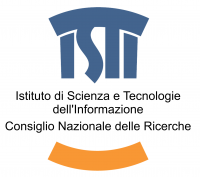Oral paper sessions: presentation format
Oral papers are intended to formally present new and groundbreaking research. They should be limited to 20 minutes in length, and there is 5 minutes scheduled for questions after each one. However, given past experience, the number of minutes available for questions varies dramatically according to the tendency for presenters to go over their allotted 20 minutes, as well as transitions between papers and cancellations.
Tips:
- Consider a Powerpoint “show” (*.pps or *.ppsx) format rather than a “presentation” (*.ppt or *.pptx) format. When you double-click the icon it immediately starts your slideset rather than having to open it manually after Powerpoint begins.
- Use fewer than 30 slides. Although the amount of time each slide should appear on screen may vary widely, any presentation with more than 30 slides generally has a slim chance of keeping to the 20 minute limit.
- Slides should be readable from a distance and the choice of text/background colors should enhance readability not detract from it. Often black text on a white background is not the best choice, as it may be too bright. Try different combinations.
- Text presented on a slide should be short and to the point. Bulleted text is usually the best option. Do not just read the text off of your slides. Ideally, bulleted slide text should be your key points but can be used to help keep your speaking on track.
- Choose images wisely. Good images are the best way of making your point(s) and keeping your audience engaged. Bad images are difficult to explain, hard to see, or may have long unreadable captions.
- Consider not using large tables or complicated charts; there usually is not enough time for the audience to read them. If you do need to use a table or chart, use color-coding to emphasize and draw focus to the cells or values that are important.
- If you are concerned about going over your allotted time, then reduce the number of slides and try again: to stay on time is mandatory.
As an audience member, when you raise a question for the speaker consider others who may also have a question – try not to dominate the entire 5 minutes. Also, if the question is highly technical, it may be more appropriate to ask the speaker face to face during a coffee break.
Session list
- Field and laboratory data recording
- Semantic, Data modelling, management and integration
- Data analysis and visualisation
- 3D modelling, visualisation and simulations
- Managing archaeological 3d models
- New trends in 3D Archaeology: Innovative techniques and methodologies for the acquisition, retrieval and analysis of cultural heritage
- Formal approaches to visibility analysis in ancient architectural spaces and cultural landscapes
- 3D Reconstruction, Analysis and Immersive Telepresence at Rock-Art Sites
- From 3D Scanning of Objects and Monuments to Augmented Reality Theoretical and Methodological Issues of Advanced 3D Imaging Technologies
- Geomatics approaches in Latin American Archaeology: the state-of-the-art in Spatial Archaeology
- Spatio-temporal modelling and GIS
- Modelling approaches to analyse the socio-economic context in archaeology
- Continuing the Revolution with Spatial Methods & Archaeological Interpretation: the how and whys of spatial analysis
- Archaeological Theory and Statistical Modelling. Bridging the Gap
- Predictivity and postdictivity in archaeology. Reflecting and discussing about theories, methods, and tools
- Homologation and standardization of archaeological cartographic data
- Digital Technologies and Quantitative Methods in the Study of Prehistoric Art – Deleted
- How to reveal geographic relations in Databases on cultural heritage
- Geographical and temporal network science in archaeology
- Interpreting the unstructured: new methods and tools for intrasite spatial analysis of palaeosurfaces
- Spatial analysis in ethnoarchaeology and experimental archaeology
- Where Do We Go From Here? Least Cost Paths Revisited
- Modelling large-scale human dispersals: data, pattern and process
- Improving Resolutions: Use and Potentials of Quantitative Methods in Near Eastern Archaeology
- Remote sensing
- Approaches for Sensor Data Integration for the Investigation of Archaeological Landscapes
- New advancements in computational imaging
- Sites, Landscapes and Survey: The Past, Present and Future of Non-Intrusive Geophysical Survey in the Field and the Laboratory
- Colour and Space in Cultural Heritage: Interdisciplinary connections – This session is kindly supported by the COST Transdomain Action, Colour and Space in Cultural Heritage (COSCH)
- Low Altitude Aerial Photography for archaeology – where is the revolution leading us?
- Users and interfaces: education, museums and multimedia
- Teaching digital archaeology – digitally teaching archaeology
- New Cultural Heritage economies in the digital era
- Replication: from the past to the digital age
- What came first, the interface or the user? About reasoning and the illusiveness of interfaces in the practice of digital and virtual archaeology
- Cultural heritage interpretation and modelling past urban and rural contexts
- Theoretical issues, and the relation of CAA with the Digital Humanities
- Towards a Theory of Practice in Applied Digital Field Methods
- Computational Ancient Environments. Can archaeologists extend themselves? – Deleted
- Modelling the archaeological process
- The immortality of the tangibles – the service of digital, virtual, and cyber archaeology in the construction of archives of human identity – Deleted
- Moving the focus from “know how” to “know why” 3D modeling cultural heritage
- Machine learning and Pattern Recognition for Archaeological Research
- Open software, open data


